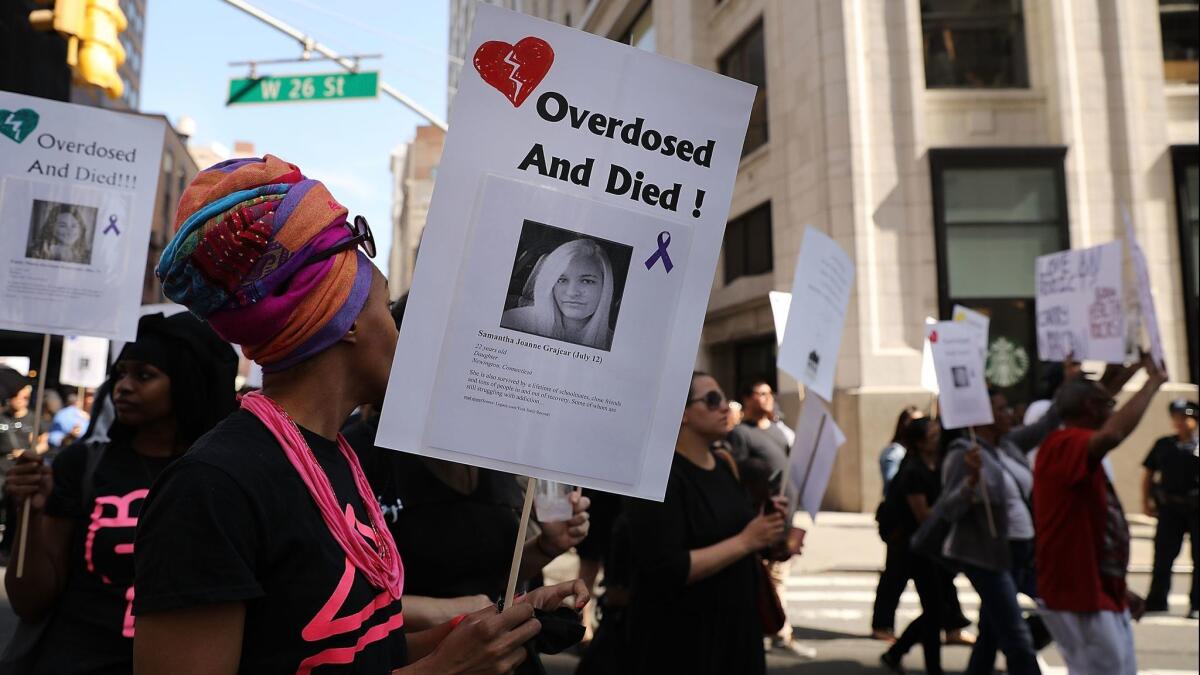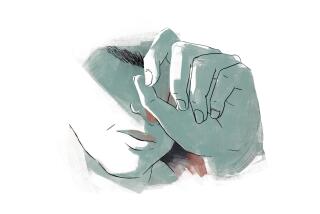Drug overdose deaths among American women have more than tripled since 1999

For many decades, drugs of abuse were a menace that mostly threatened the lives of men. In 1999, fewer than 1 in 25,000 adult women in the United States died of a drug overdose, and childbirth was twice as deadly.
No more. Drug overdoses have become a prodigious thief of female lives in the U.S. And they are increasingly claiming women’s lives deep into middle age, according to a new report from the Centers for Disease Control and Prevention.
Of the 70,237 fatal drug overdoses in the United States during 2017, 18,110 of the victims were women between the ages of 30 and 64, records from the National Vital Statistics System show. That’s up from 4,314 in 1999.
Some of the steepest increases in fatality rates have been seen in women who may not fit the public’s expectations of drug abusers. For instance, the rate of drug overdose deaths among women ages 55 to 64 multiplied by a factor of five between 1999 and 2017, driven by a tenfold increase in the rate of prescription opioid deaths.
The finding that women well beyond middle age are misusing prescription drugs, abusing illicit drugs and probably taking dangerous drug combinations is more than just a curiosity. Added to an 80% rise in suicide rates among 45-to-64-year-old women since around the turn of the century, it suggests that daughters, wives, mothers and grandmothers are bearing greater strains than they have in the past.
Along with rising death rates of alcohol-related diseases among women, fatal overdoses are sometimes referred to as “deaths of despair.” In the last three years, they have begun to reverse decades of gains made in the nation’s life expectancy.
The study in Friday’s edition of the Morbidity and Mortality Weekly Report also suggests that U.S. women are responding to stress in ways that are closing the longstanding gaps between men and women when it comes to self-harm, substance abuse and risk-taking behavior.
For instance, the team from the CDC’s National Center for Injury Prevention and Control found that, just as for men, the rate of fatal overdoses involving synthetic opioids spiked sharply in 2015. Women’s deaths attributed to these drugs — including fentanyl and tramadol — grew 16-fold in the 18 years leading up to 2017.
Deaths linked to heroin and benzodiazepines, a class of prescription anti-anxiety drugs, also rose sharply, increasing 915% and 830%, respectively, between 1999 and 2017. Fatal overdoses of cocaine and antidepressants also grew, albeit more slowly.
In 1999, the U.S. women at greatest risk of a fatal drug overdose were between the ages of 40 and 44. But back then, the risk of dying from an overdose dropped off sharply after a woman’s 50th birthday.
Over the next 18 years, the rate of fatal overdoses rose for American women in all the age brackets between 30 and 64. But by 2017, they were highest among women in their early- to mid-50s. As a result, the average age of death due to a drug overdose rose from 43.5 to 46.5.
Overdoses among American women “continue to be unacceptably high,” the authors of the new report wrote.
The study also makes clear that as medical and public health professionals struggle to stem a national epidemic of drug overdoses, they must pay particular attention to women — and to a wider range of women than they have in the past.
The health establishment has expended great effort in the past to warn women of childbearing age about the potential risks of certain drugs, including narcotic painkillers and anti-anxiety medications that could harm a developing fetus, the CDC team noted. But it’s clear that equally necessary messages are not reaching the older women who are dying of drug overdoses, the authors suggested.
Healthcare providers who treat women for pain, depression or anxiety may need to pay special attention to those around midlife, they wrote. And insurance programs that serve older women, including Medicare, may need to sharpen their focus on older women’s needs for more careful prescribing, more focused counseling, and better access to treatment for substance dependence than they have done in the past.
MORE IN SCIENCE







